Scheduled Policy Optimization for Natural Language Communication with
Intelligent Agents
Wenhan Xiong1, Xiaoxiao Guo2, Mo Yu2, Shiyu Chang2, Bowen Zhou3, William Yang Wang1,
1 University of California, Santa Barbara
2 IBM Research
3 JD AI Research
{xwhan,william}@cs.ucsb.edu
8
1
0
2
n
u
J
6
1
]
L
C
.
s
c
[
1
v
7
8
1
6
0
.
6
0
8
1
:
v
i
X
r
a
Abstract
We investigate the task of learning to follow natural
language instructions by jointly reasoning with vi-
sual observations and language inputs. In contrast
to existing methods which start with learning from
demonstrations (LfD) and then use reinforcement
learning (RL) to fine-tune the model parameters,
we propose a novel policy optimization algorithm
which dynamically schedules demonstration learn-
ing and RL. The proposed training paradigm pro-
vides efficient exploration and better generalization
beyond existing methods. Comparing to existing
ensemble models, the best single model based on
our proposed method tremendously decreases the
execution error by over 50% on a block-world envi-
ronment. To further illustrate the exploration strat-
egy of our RL algorithm, We also include system-
atic studies on the evolution of policy entropy dur-
ing training.
1 Introduction
Language is a natural form for humans to express their inten-
tion. In recent years, although researchers have successfully
built intelligent systems which are able to accomplish com-
plicated tasks [Levine et al., 2016; Silver et al., 2017], few of
them are able to cooperate with humans via natural language.
To build better AI systems that can safely and robustly work
along with people, it is necessary to teach machines to un-
derstand free-form human language instructions and output
low-level working actions. This is a challenging task, mainly
due to the ambiguity of human language and the complexity
of the working environment.
In this work, we aim at developing an intelligent agent
which can take as inputs human language instructions as well
as environment observations to finish the task specified by the
human language in a simulated working environment [Bisk et
al., 2016; Misra et al., 2017]. The specific task is illustrated
in Figure 1. In order to accomplish the task, the agent should
be able to recognize potential obstacles in the environment
and move around. Besides, since the same task may be de-
scribed by different humans, the agent must also be robust to
Figure 1: Task illustration. The intelligent agent is expected to un-
derstand human language instructions and make sequential actions
based on its observations about the working environment.
language variations.
Early methods for similar tasks [Chen and Mooney, 2011;
Matuszek et al., 2010; Tellex et al., 2011] rely on human
defined spatial or language features to parse the language.
Meticulous engineering in terms of environment domain and
language lexicon is often required. In this work, we focus on
developing a neural-network based model that can be trained
end-to-end with minimum domain and linguistic knowledge.
More recently, the task of mapping natural language into
low-level actions or programs has been tackled with neural
network based methods [Mei et al., 2016; Liang et al., 2016].
In the simplest case, a cross-entropy loss can be used to train
the model so that it can imitate the human-demonstrated ac-
tions. However, the pure supervised model fails to explore
the state-action space outside the demonstration path, which
undermines the model’s generalization ability.
To develop a model that is able to not only imitate but also
generalize, Misra et al. [2017] apply various deep reinforce-
ment learning (RL) techniques to this task. The RL agent
is able to explore more state-action space via its stochastic
policy (probability distribution over actions). Since RL from
scratch can be highly data-inefficient due to sparse rewards
and the large action space. Misra el al. [2017] warm-start the
network parameters with several epochs of supervised learn-
ing which imitates human actions. The RL algorithm is then
adopted to fine-tune the parameters. This training paradigm
is successful at speeding up training. However, we show by
experiments that the supervised pre-training often results in
instructionMove the Adidas block to the same column as the Nvidia block, and one and a half rows above the Texaco block�
a high-entropy policy. When the agent samples actions from
the high-entropy policy, the agent tends to make near-greedy
decisions. This actually prevents the agent from exploring the
consequences of choosing other actions. Their experiment re-
sults also indicate that there is still a large performance gap
between humans and existing systems.
In contrast to this training paradigm, we propose a novel
scheduled policy optimization mechanism inspired by sched-
uled sampling [Bengio et al., 2015], which addresses the dis-
crepancy between training and inference in sequence decod-
ing. Our scheduling mechanism dynamically alternates be-
tween imitating the human actions (learning from demonstra-
tion) and reinforcement learning. Ideally, at the early stage of
training, the scheduler should more frequently utilize demon-
stration learning to alleviate the sparse reward issue; as the
agent acquires more experience, more RL updates should be
scheduled to achieve better generalization. Empirically, we
achieve the best performance on the block-world task, reduc-
ing the execution error by more than 50%, which is much
closer to human performance. In summary, our main contri-
butions are:
• Based on the Block environment, we build a state-of-the-
art system which is able to accomplish tasks described
by free-form text.
• We propose a novel scheduled RL algorithm which
achieves better data efficiency while maintaining suffi-
cient exploration.
• We conduct systematic studies to compare the explo-
ration strategies of different RL systems using the Block
environment.
Our paper is organized as follows: we describe the pro-
posed approach in Section 2. Experiment results and analysis
are shown in Section 3. We then discuss related work in Sec-
tion 4. Finally, we conclude in Section 5.
2 Scheduled Policy Optimization for Natural
Language Communication
2.1 Task Formulation
We consider an agent sequentially interacting with a block-
world environment to accomplish a goal specified by a natu-
ral language instruction. For example, the agent may receive
an instruction “ move the block A to the right side of block
B”. The agent then moves certain blocks with a sequence of
actions to accomplish the described task. Specifically, an in-
struction x = {x1, x2, ..., xn} ∈ X is a sequence of word
tokens from a vocabulary V . At every time step, the agent
perceives the environment state o ∈ O and outputs an action
a ∈ A. The environment state could be a top-down view im-
age of the map and the action could be “move block-A north”.
Since the agent’s action selection would depend on both the
given instruction and the environment state, we denote the
joint of the instruction and the environment state as the state
of the agent, s = (x, o) ∈ S.1 The agent’s behavior is deter-
mined by a policy function π : S × A → [0, 1], which maps
the agent state into a distribution over actions.
1S = X × O
At time step t the agent receives an immediate scalar re-
ward rt. The scalar is affected by the dynamics of the envi-
ronment and the agent’s actions. The goal of the agent is to
find an optimal policy maximizing the expected sum of dis-
counted rewards,
Lπ = E ∞
t=1
max
π
γt−1rt|π
where γ ∈ [0, 1) is a discount factor determining the tradeoff
between short-term and long-term rewards. Deriving the opti-
mal policy is practical via either learning from demonstration
or reinforcement learning methods.
n
The core of the agent is the policy. Since the agent states
consist of instructions and environment states (images), a suc-
cessful policy architecture thus should be able to handle both
language understanding and grounding problems.
2.2 Policy Architecture
We use the same policy neural network architecture as [Misra
et al., 2017] for our agent. As depicted in Figure 2, the pol-
icy architecture takes three inputs. The environment state
encoder converts the images, o ∈ R120×120×3, to a vector
via convolutional neural networks, so = ConvNet(o). The
instruction encoder utilizes LSTM [Hochreiter and Schmid-
huber, 1997] to encode the instruction. The word tokens
{w1, w2, ..., wn} are represented as one-hot vectors and then
passed to a word embedding matrix W I ∈ RD1×|V |, fol-
lowed by the LSTM, i.e. hi = LSTM(W I wi, hi−1) where
D1 is the word embedding size and |V | is the vocabulary size.
The instruction sentence is then represented as the average of
of the LSTM outputs, sx = 1
i=1 hi. To avoid repeated
n
failed actions, the last action a is incorporated using an ac-
tion encoding matrix W A ∈ RD2×|A|, sa = W Aa, where
D2 is the action embedding size and |A| is the number of ac-
tions. The agent state s is the concatenation of the visual, text
and action vectors, s = so ⊕ sx ⊕ sa. The agent state vector
is passed through linear layers for predicting the two compo-
nents of the action, where the first component is the block ID
to move, and the second is the movement direction. Both
are one-hot predictions.
2.3 Scheduled Policy Optimization
Direct reinforcement learning in a complex environment can
be challenging especially when the state-action space is large.
In our case, the agent only obtains the maximal reward when
the instruction is accomplished and the probability of accom-
plishing the instruction via a random policy is exponentially
decayed by a factor of 81, the number of the agent actions (4
directions × 20 blocks; and one special STOP action). Since
the agent barely finds the optimal path during exploration, the
training can be slow and ineffective.
To mitigate this problem, expert demonstrations are widely
used to warm-start the initial policy. [Misra et al., 2017] col-
lected a set of off-line demonstration to derive shaping reward
to mitigate the delayed rewards. An orthogonal approach
to leverage labeled expert actions is learning from demon-
stration, also referred as imitation learning or apprenticeship
learning. However, since the demonstrations are collected
�
Figure 2: Overview of our Scheduled Policy Optimization framework. The left part of the figure shows the structure of the policy network.
The right part shows the Policy Optimization mechanism. The scheduler will keep track of the performance during training and maintain
baseline value using moving averages. It alternately chooses between the RL update and LfD update.
off-line in our problem, no supervision would be available
when the agent’s behavior is divergent from the demonstra-
tion. [Ross et al., 2011] address the state distribution mis-
match issue in LfD but their proposed method requires that
demonstration must be collected on-line. We also observe
that the learned policy from direct LfD has low entropy and
thus it barely explores the environment, which makes the
agent stuck at local minima. Brittle and tricky relaxation of
the learned policy may introduce additional entropy, but it re-
quires a significant amount of human tuning.
In contrast to LfD, RL method is able to use its current pol-
icy to explore the environment and leverage new experience
to bootstrap the policy. A combination of the LfD and RL
could utilize the merits of both worlds. Our technical contri-
bution of this paper is a new scheduled policy optimization
algorithm which adaptively alternates between learning from
demonstration and reinforcement learning.
Schedule Candidates
We investigate various schedule schema and reinforcement
learning approaches in our experiments. Potential candidates
of the scheduling mechanism are discussed as follows:
Deterministic Scheduling The simplest is to schedule the
LfD every N updates. This brings effective learning at the
early stage because it mitigates sparse rewards. However, as
the policy improves, the deterministic scheduler may fail to
encourage sufficient exploration, which makes the training
less efficient.
�-Sampling As an simple improvement of the determinis-
tic scheduling, the �-Sampling is able to adapt the probabil-
ity of LfD as training progresses by reducing �. The draw-
back is that adaptively setting � requires lots of human hyper-
parameter tuning.
Algorithm 1: Scheduled Policy Optimization Algorithm
1 Randomly initialize policy network πθ;
2 Initialize learning history H ← ∅;
3 Scheduling flag sflag ← False;
4 for epoch ← 1 to N do
for sample ∈ trainSet do
Initialize episode length steps ← 0
if sflag then
5
6
7
8
9
Retrieve expert trajectory;
Append expert trajectory execution error e to H;
Update θ using: g ∝ ∇θJ BC (θ);
sflag ← False
Sample action path τ ∼ πθ until termination;
b = average(H) + λσc
Append execution error e to H;
Update θ using: g ∝ ∇θJ P P O(θ);
if e > b then
sflag ← True
else
10
11
12
13
14
15
16
17
18
History Baseline The learning status of the agent could be
measured via a windowed moving average of its execution
performance H. In our case we use the minimum number of
steps from the final state of a trial to accomplish the instruc-
tion as the performance measurement. The larger the step
number is, the worse the trial would be. The LfD update is
called to guide the learning progress whenever the last trial is
worse than the baseline estimate:
b = average(H) + λσc
where σc is the standard error of the mean estimate and the
coefficient λ > 0 is a hyper-parameter controlling the con-
vergence speed. This schedule schema is able to adaptively
DirectionBlock Optimization Action PPO LfD EnvironmCommandRewardTraining Place the Pepsi block so that its top left corner Model Conv Previous Embedding RNN �
utilize the imitation learning and allows more RL exploration.
The schedule schema will call LfD less as the learning pro-
gresses because it becomes less likely for the agent to be
worse than the baseline.
Our best model is based on the baseline scheduler coupled
with PPO algorithm, which is less sensitive to hyperparam-
eters. Since the baseline module uses an adaptive baseline
estimator which measures the policy’s real time performance,
it tends to give more consistent improvements. Besides, PPO
can provides a more stable baseline value compared to un-
constrained policy gradient.
In our experiments, the empirical performance is optimal
when the history baseline module is used. The pseudo code of
our Scheduled Policy Optimization is shown in Algorithm 1.
The policy learning algorithms we use are discussed below.
Behavior Cloning
As for LfD, we utilize Behavioral cloning [Pomerleau, 1991],
which is a widely used imitation learning approach. Its learn-
ing objective is to maximize the log likelihood of the demon-
stration actions:
logπθ(a∗
i |si)
N
i=1
J BC(θ) =
1
N
i )}N
where {(si, a∗
i=1 is a set of demonstration state-action
pairs and θ are the learnable parameters of the policy neural
network.
Proximal Policy Optimization
To obtain a stable baseline of execution performance, we
use a recently proposed conservative policy gradient method,
Proximal Policy Optimization (PPO) [Schulman et al., 2017],
as our RL algorithm. PPO defines a surrogate objective which
is the lower bound of the true reward objective:
J P P O(θ) = E
minρt(θ)At, [ρt(θ)]1+�
1−�At)
ρt(θ) =
πθ(at|st)
πθold(at|st)
where [.]a
b is a clip function in the interval [a, b] and At =
Rt − V (st) is the advantage function, calculated as the dif-
ference between reward and the state value estimate of time
step t. The state values estimator is learned by minimizing
the mean square error between rt and V (st):
Jvalue(θ) = E[(rt − V (st))2]
When compared to directly optimizing the reward objective
E[At], optimizing this lower bound J P P O can better guaran-
tee monotonic policy improvements.
3 Experiments
3.1 Dataset
We evaluate our scheduled policy optimization method on the
Blocks environment originally created by Bisk et al. [2016].
There are 20 unique blocks in the environment and the goal
of the agent is to accomplish natural language described tasks
by moving blocks in the 2D map. The dataset consists of
11,871 training samples and 1,179/3,177 samples for vali-
dation/testing. To speed up training, previous work applied
reward shaping techniques in designing immediate rewards
based on the environment’s internal states. To make the re-
sults comparable we use the same reward functions as Misra
et al. [2017]. The performance of the learned policies is mea-
sured by the execution error, which is the minimum number
of steps to accomplish the task from the last state in a trial.
The lower the execution errors are, the better the learned pol-
icy would be. Note that Misra et al. [2017] also report the
minimum distance metric. As the released simulator does not
provide this number, we are unable to compare this metric.
3.2 Training Details
Our model is implemented using PyTorch [Paszke et al.,
2017]. We use Adam optimizer [Kingma and Ba, 2014] to up-
date the model parameters. The initial learning rate is 0.0001
and is divided by 2 for every 4 epochs. The windowed his-
tory consists of the execution errors of the last 100 trials.
The clipping interval of PPO is set to [0.95, 1.05] and the
number of PPO epochs for each update step is set to be 4.
We restrict the number of training epochs to be less than 20.
Early-stopping is applied using the Dev set.2 In addition to
the PPO algorithm, we also include the results of using other
reinforcement learning algorithms, REINFORCE [Williams,
1992] and advantage actor-critic (A2C) [Peters and Schaal,
2008], to demonstrate the general improvements from the
scheduled policy optimization schema. In order to achieve
more stable training, entropy regularization with the same co-
efficient (0.1) is also added to all these models.
3.3 Baselines
We include results from [Misra et al., 2017] as baselines:
HUMAN is human demonstration. It is also the lower bound
of the performance.
INITIAL is the agent taking no actions and the trial termi-
nates at the initial state. It can also be viewed as the average
distance between the initial state and the goal state.
RANDOM is the agent taking random actions. Note that it is
generally worse than the INITIAL baseline because the ran-
dom actions even increase the average distance.
Ensem-LfD is trained via learning from demonstration only.
Trained models are ensembled for better performance.
Ensem-DQN is trained using reward shaping techniques via
DQN. No demonstration is used to initialize the network.
Ensem-REIN is initialized with supervised learning from
demonstrations and then retrained by REINFORCE algo-
rithm using cumulative rewards.
Ensem-BEST is initialized with supervised learning from
demonstrations and then retrained by REINFORCE algo-
rithm using shaped intermediate rewards.
3.4 Main Results
Table 1 summarizes the performance of our agents and the
baselines on the dev and test sets. The performance is mea-
sured as the minimal number of steps from the final state of a
2Code and trained models can be found at https://github.
com/xwhan/walk_the_blocks.
�
Methods
HUMAN
INITIAL
RANDOM
Misra el al.
Ensem-LfD
Ensem-DQN
Ensem-REIN
Ensem-BEST
Our Models
S-REIN
S-A2C
S-PPO
Dev Error
Test Error
Mean Med. Mean Med.
0.31
0.35
6.12
5.95
15.3
15.35
0.30
5.71
15.70
0.37
6.23
15.11
4.64
5.85
5.28
3.59
2.94
2.79
1.69
4.27
5.59
5.23
3.03
2.23
2.21
0.99
4.95
6.15
5.69
3.78
2.95
2.75
1.71
4.53
5.97
5.57
3.14
2.21
2.18
1.04
Table 1: Performance (mean and median of execution errors) of our
scheduled policy optimization and baselines. The numbers of the
baselines are from [Misra et al., 2017].
Figure 3: Curves of policy entropy in training for the three agents.
The spikes in the curve are caused by random shuffle after each
epoch. LfD-PPO: PPO with supervised learning for initialization;
PPO: A pure RL algorithm with PPO updates only; Scheduled RL:
our proposed method.
trial to accomplish the instruction (final distance from the tar-
get). We denote our agent as Scheduled X (S-X), where X
could be REINFORCE, advantage actor-critic (A2C) or PPO.
Note that instead of using ensembles to achieve best results
all of our agent results are generated using single models.
Our scheduled policy gradient variants (S-REIN/S-A2C/S-
PPO) have significant lower errors than the best baseline
(Ensem-BEST). S-PPO (scheduled PPO) is able to move the
blocks to the positions that are only 1 ∼ 2 blocks away
from the goal locations while Ensem-BEST can only move to
3 ∼ 4 away locations. Consider the initial distance is around
6 blocks, our scheduled policy optimization methods make
substantial progress.
We also notice that the scheduled systems with uncon-
strained policy gradients generate very similar performance
while the scheduled PPO is able to give much better result,
potentially due to its stable policy updates and accurate base-
line values.
The performance of Ensem-LfD also suggests that learn-
ing from demonstration approach fails to generalize in this
task. Compared to the INITIAL baseline, the improvement
of Ensem-LfD is limited to only one block.
3.5 Analysis of the Exploration Strategies
The exploration strategy plays an essential role in the agent’s
policy learning. Insufficient exploration can lead to a local-
optimal policy which may not generalize well during test,
while too much exploration can be significantly inefficient.
Ideally, we want the agent to do effective exploration during
early stage of training; as training goes on, it should be able to
converge to a near-greedy policy. We show that our schedule
policy optimization has indeed achieved this kind of explo-
ration strategy.
We compare our schedule policy optimization method (S-
PPO) to two baselines, a pure PPO method (PPO) and a naive
combination of LfD and PPO (LfD-PPO). LfD-PPO initial-
izes the policy using LfD and then use PPO to fine-tune the
model.
We keep track of the policy entropy (Figure 3) and the pol-
icy performance (Figure 4) in learning. We examine the pol-
icy entropy because it is a good indicator of the policy explo-
ration. Since entropy indicates the randomness of a distribu-
tion, a high-entropy policy tends to explore the surrounding
area of the greedy paths while the policy with a low entropy
usually sticks to the greedy path. The policy performance is
measured by error curves Figure 4, which show the execution
errors of different agents during training. The error curves re-
flect the efficacy of learning. We notice significant difference
in the exploration strategies of the three agents.
The PPO agent’s policy entropy decreases dramatically at
the beginning of training but its execution performance fails
to improve. Our hypothesis is that the PPO agent is vulner-
able to suboptimal policies. Once the agent obtains much
better rewards than previous encountered rewards, the update
gradient will push the distribution density to this particular
action. Since the actions are sampled from the distribution,
it becomes more likely that the agent will sample the same
action again and get an update gradient in the same direction.
This might lead to a low-entropy but sub-optimal policy.
As for the LfD-PPO agent, the supervised learning may
also result in a relatively low-entropy policy. When the PPO
training starts, the agent maintains a high entropy for a short
time and then quickly goes back to a low-entropy policy.
This learning pattern indicates a defective policy that fails to
do sufficient exploration in the environment, leading to slow
training, as indicated by Figure 4.
Compared to both the PPO agent and LfD-PPO agent, our
RL agent with the scheduling mechanism has a higher en-
tropy at the early stage of training. As training goes on, the
policy is able to converge to a low-entropy distribution. Also,
we can see from Figure 4 that the learning process of our
agent is also much more effective than the other baselines.
3.6 Comparison with LfD
Compared to LfD, our method has two major advantages.
First, fewer demonstrations data are required to learn a gen-
01000020000300004000050000Updating Steps0.70.80.91.01.11.21.31.41.51.6Policy EntropyLfD-PPO: RL startsLfD-PPOScheduled RLPPO�
Figure 4: Curves of distance errors in training for the three agents.
Only the distance errors in the PPO re-training of the LfD-PPO
baseline are shown.
Figure 5: Comparison between LfD and our Scheduled RL in terms
of number of LfD updates and episode length. The bars show the
number of LfD updates in each training epoch for the Scheduled
RL. The lines are the average episode lengths on the dev set.
eralizable policy. As shown by the bar plot in Figure 5, our
scheduled RL agent uses fewer and fewer demonstrations dur-
ing training. This also indicates consistent policy improve-
ment. Note that for LfD, all the demonstrations are used in
every epoch.
Next, we look into the episode lengths during inference to
see if the agent is able to finish the task efficiently. As indi-
cated by Figure 5, which shows the average episode lengths
(steps of actions) on the dev set after every training epoch, the
LfD agent often exhausts the maximum action steps. How-
ever, we notice that our scheduled RL can alleviate this prob-
lem as we conduct more training epochs. The black line
shows the average lengths of human demonstrations, which
serve as the baseline. At the early training stage, the aver-
age length is close to 40, which is set as the maximum ac-
tion steps. As training goes on, the episode lengths of our
scheduled agent is getting closer to the average demonstration
length. In contrast, The supervised model still fails to output
STOP after a long training time. One possible explanation
for this phenomenon is related to the class imbalance prob-
lem of machine learning.
In the supervised settings, every
state-action pair is used as one training sample. It is obvious
that there are much more non-stop actions than stop actions,
which makes the labels largely imbalanced. This makes it
rather difficult for the LfD agent to recognize target states.
Whereas for RL, as it collects training data by sampling from
the policy, it can be vulnerable to imbalanced classes.
4 Related Work
The task of learning to understand free-form instructions has
attracted lots of attention since early stage of AI [Di Eu-
genio, 1992; Winograd, 1972]. MacMahon et al. [2006]
build a system based on linguistic and execution modules.
Their model requires both spatial and linguistic prior knowl-
edge and cannot be trained end-to-end. Tellex et al.[2011]
develop an approach based on probabilistic graphical mod-
els. Their approach requires a semantic map of the en-
vironment, which may not be available for complex envi-
ronments. Some recent studies [Kim and Mooney, 2013;
Mei et al., 2016] assume no prior linguistic knowledge and
formulate the task as an encoder-decoder problem, where
free-form texts are directly mapped into executable actions.
These models take simple discrete state inputs while our
model is able to take raw RGB images as inputs.
Although the problem of instruction understanding has
been extensively studied, only a few methods take into ac-
count the state change of the environment during execution.
Branavan et al. [2009] are the first to apply RL to learn a
mapping between documents and the sequence of actions,
which considers the state transition dynamics. However,
their method is based on a simple log-linear model, which
is also hard to generalize to multi-modal state inputs. On
the other hand, with the success of deep reinforcement learn-
ing (DRL) [Mnih et al., 2015; Silver et al., 2017], Misra et
al. [2017] propose to model the action decoding as a Markov
Decision Process using deep neural networks. Their model
makes use of both human demonstration actions and shaped
rewards for training. The authors test various RL algorithms,
however, the performance is still far from human perfor-
mance. An earlier work [Walsh et al., 2011] has explored the
scheduling of imitation learning and RL but the authors make
much stronger assumption about the coverage of demonstra-
tion actions. While they require the demonstration to cover
the whole action space, our method only needs a fixed set of
demonstrations.
5 Conclusion
We study the problem of directly mapping human language
instructions and raw image observations into effective ac-
tion sequence. On the Blocks environment, the proposed RL
framework outperforms the existing methods by 55% in terms
of exexution error. Compared to existing methods which use
human demonstration to pre-train the network, our schedul-
ing mechanism takes both generalization and data efficiency
into account. By utilizing an adaptive scheduling mechanism
which alternates between LfD (imitation learning) and con-
servative policy updates, the RL agent is able to maintain a
high-entropy training policy for sufficient exploration with-
out sacrificing the learning efficiency. Besides, since there
01000020000300004000050000Updating Steps2468101214Distance ErrorLfD-PPO: RL startsLfD-PPOScheduled RLPPO0246810Training Epochs3100320033003400350036003700380039004000Number of LfD UpdatesLfD Updates of S-PPO10152025303540Episode LengthLfDScheduled RLDemonstraion�
is no extensive pre-training in our framework, much fewer
demonstration paths are required to train our model.
Acknowledgments
We are grateful for the support of an IBM Faculty Award.
References
[Anderson et al., 2017] Peter Anderson, Qi Wu, Damien
Teney, Jake Bruce, Mark Johnson, Niko Sünderhauf,
Ian Reid, Stephen Gould, and Anton van den Hengel.
Vision-and-language navigation:
Interpreting visually-
grounded navigation instructions in real environments.
arXiv preprint arXiv:1711.07280, 2017.
[Bengio et al., 2015] Samy Bengio, Oriol Vinyals, Navdeep
Jaitly, and Noam Shazeer. Scheduled sampling for se-
quence prediction with recurrent neural networks. In Ad-
vances in Neural Information Processing Systems, pages
1171–1179, 2015.
[Bisk et al., 2016] Yonatan Bisk, Deniz Yuret, and Daniel
Marcu. Natural language communication with robots. In
HLT-NAACL, pages 751–761, 2016.
[Branavan et al., 2009] Satchuthananthavale RK Branavan,
Harr Chen, Luke S Zettlemoyer, and Regina Barzilay. Re-
inforcement learning for mapping instructions to actions.
In Proceedings of the Joint Conference of the 47th Annual
Meeting of the ACL and the 4th International Joint Con-
ference on Natural Language Processing of the AFNLP:
Volume 1-Volume 1, pages 82–90. Association for Compu-
tational Linguistics, 2009.
[Chen and Mooney, 2011] David L Chen and Raymond J
Mooney. Learning to interpret natural language naviga-
In AAAI, volume 2,
tion instructions from observations.
pages 1–2, 2011.
[Di Eugenio, 1992] Barbara Di Eugenio. Understanding nat-
ural language instructions: the case of purpose clauses. In
Proceedings of the 30th annual meeting on Association
for Computational Linguistics, pages 120–127. Associa-
tion for Computational Linguistics, 1992.
[Hochreiter and Schmidhuber, 1997] Sepp Hochreiter and
Jürgen Schmidhuber. Long short-term memory. Neural
computation, 9(8):1735–1780, 1997.
[Kim and Mooney, 2013] Joohyun Kim and Raymond J
Mooney. Adapting discriminative reranking to grounded
language learning. In ACL (1), pages 218–227, 2013.
[Kingma and Ba, 2014] Diederik Kingma and Jimmy Ba.
arXiv
Adam: A method for stochastic optimization.
preprint arXiv:1412.6980, 2014.
[Levine et al., 2016] Sergey Levine, Peter Pastor, Alex
Krizhevsky, Julian Ibarz, and Deirdre Quillen. Learn-
ing hand-eye coordination for robotic grasping with deep
learning and large-scale data collection. The International
Journal of Robotics Research, page 0278364917710318,
2016.
[Liang et al., 2016] Chen Liang, Jonathan Berant, Quoc Le,
Kenneth D Forbus, and Ni Lao. Neural symbolic ma-
chines: Learning semantic parsers on freebase with weak
supervision. arXiv preprint arXiv:1611.00020, 2016.
[MacMahon et al., 2006] Matt
Brian
Stankiewicz, and Benjamin Kuipers. Walk the talk:
Connecting language, knowledge, and action in route
instructions. Def, 2(6):4, 2006.
MacMahon,
[Matuszek et al., 2010] Cynthia Matuszek, Dieter Fox, and
Karl Koscher. Following directions using statistical ma-
In Human-Robot Interaction (HRI),
chine translation.
2010 5th ACM/IEEE International Conference on, pages
251–258. IEEE, 2010.
[Mei et al., 2016] Hongyuan Mei, Mohit Bansal,
and
Matthew R Walter. Listen, attend, and walk: Neural
mapping of navigational instructions to action sequences.
In AAAI, volume 1, page 2, 2016.
[Misra et al., 2017] Dipendra K Misra, John Langford, and
Yoav Artzi. Mapping instructions and visual observations
In Proceedings
to actions with reinforcement learning.
of the 2017 Conference on Empirical Methods in Natural
Language Processing (EMNLP 2017), Copenhagen, Den-
mark, September 2017. ACL.
[Mnih et al., 2015] Volodymyr Mnih, Koray Kavukcuoglu,
David Silver, Andrei A Rusu, Joel Veness, Marc G Belle-
mare, Alex Graves, Martin Riedmiller, Andreas K Fidje-
land, Georg Ostrovski, et al. Human-level control through
deep reinforcement learning. Nature, 518(7540):529–533,
2015.
[Paszke et al., 2017] Adam Paszke, Sam Gross, Soumith
Chintala, Gregory Chanan, Edward Yang, Zachary De-
Vito, Zeming Lin, Alban Desmaison, Luca Antiga, and
Adam Lerer. Automatic differentiation in pytorch. 2017.
[Peters and Schaal, 2008] Jan Peters and Stefan Schaal. Nat-
Neurocomputing, 71(7):1180–1190,
ural actor-critic.
2008.
[Pomerleau, 1991] Dean A Pomerleau. Efficient training of
artificial neural networks for autonomous navigation. Neu-
ral Computation, 3(1):88–97, 1991.
[Ranzato et al., 2015] Marc’Aurelio Ranzato, Sumit Chopra,
Michael Auli, and Wojciech Zaremba. Sequence level
training with recurrent neural networks. arXiv preprint
arXiv:1511.06732, 2015.
[Ross et al., 2011] Stéphane Ross, Geoffrey J Gordon, and
Drew Bagnell. A reduction of imitation learning and struc-
tured prediction to no-regret online learning. In Interna-
tional Conference on Artificial Intelligence and Statistics,
pages 627–635, 2011.
[Schulman et al., 2017] John Schulman, Filip Wolski, Pra-
fulla Dhariwal, Alec Radford, and Oleg Klimov. Prox-
arXiv preprint
imal policy optimization algorithms.
arXiv:1707.06347, 2017.
[Silver et al., 2017] David Silver,
Julian Schrittwieser,
Karen Simonyan, Ioannis Antonoglou, Aja Huang, Arthur
Guez, Thomas Hubert, Lucas Baker, Matthew Lai, Adrian
�
Bolton, et al. Mastering the game of go without human
knowledge. Nature, 550(7676):354–359, 2017.
our RL algorithm does not provide much improvement. We
leave further investigation on this dataset to future work.
[Tellex et al., 2011] Stefanie Tellex, Thomas Kollar, Steven
Dickerson, Matthew R Walter, Ashis Gopal Banerjee,
Seth J Teller, and Nicholas Roy. Understanding natu-
ral language commands for robotic navigation and mobile
manipulation. In AAAI, 2011.
[Walsh et al., 2011] Thomas J Walsh, Daniel K Hewlett, and
Clayton T Morrison. Blending autonomous exploration
and apprenticeship learning. In Advances in Neural Infor-
mation Processing Systems, pages 2258–2266, 2011.
[Williams, 1992] Ronald J Williams.
Simple statistical
gradient-following algorithms for connectionist reinforce-
ment learning. Machine learning, 8(3-4):229–256, 1992.
[Winograd, 1972] Terry Winograd. Understanding natural
language. Cognitive psychology, 3(1):1–191, 1972.
A Additional Experiments on A New Dataset
Figure 6: Distance error evaluated on the unseen development
scenes of Room-to-Room environment.
More recently, a new dataset [Anderson et al., 2017]
with realistic indoor scenes has been released. This dataset
(Room-to-Room) includes 21,567 crowd-sourced natural lan-
guage instructions and 10,800 panoramic RGB-D images.
To the best of our knowledge, this is the first instruction-
following dataset that is made of real images. To show that
the scheduled mechanism is able to provide general improve-
ments, we compare our scheduled RL with vanilla RL and
a mix-loss [Ranzato et al., 2015] method on this dataset.
We use a similar network architecture as in [Anderson et
al., 2017]. Instead of training the agent using only a cross-
entropy loss to imitate demonstration actions, we introduce a
distance-based reward. We conduct some initial experiments
using the released development environment, which includes
only unseen scenes. Figure 6 shows the curves of distance er-
ror (distance between the agent’s final position and the target
position) calculated on the unseen scenes from the develop-
ment set. We can see that the proposed scheduled RL al-
gorithm is superior to both cross-entropy training and mixed-
loss training. However, we also notice that on the seen scenes,
05000100001500020000Training Steps7.07.58.08.59.09.5Distance ErrorImitationMix-LossScheduled-RL�
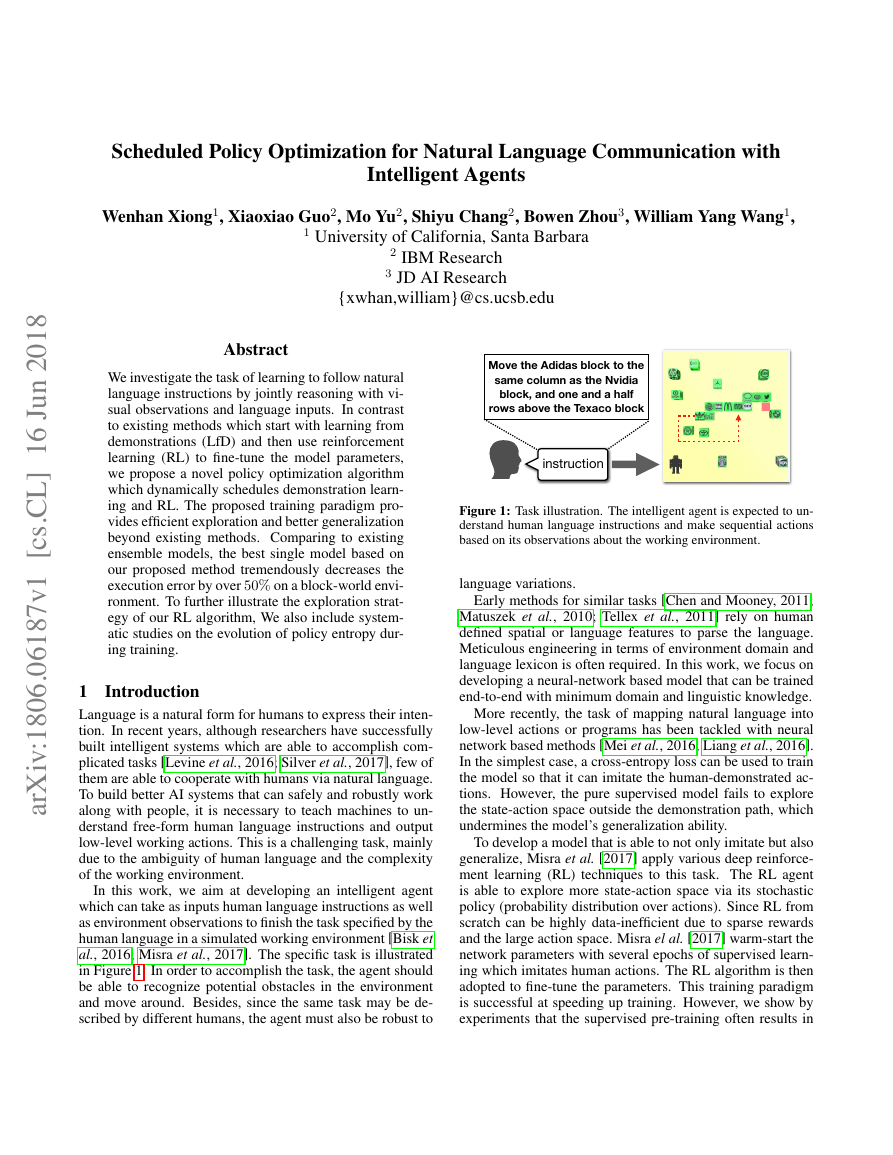
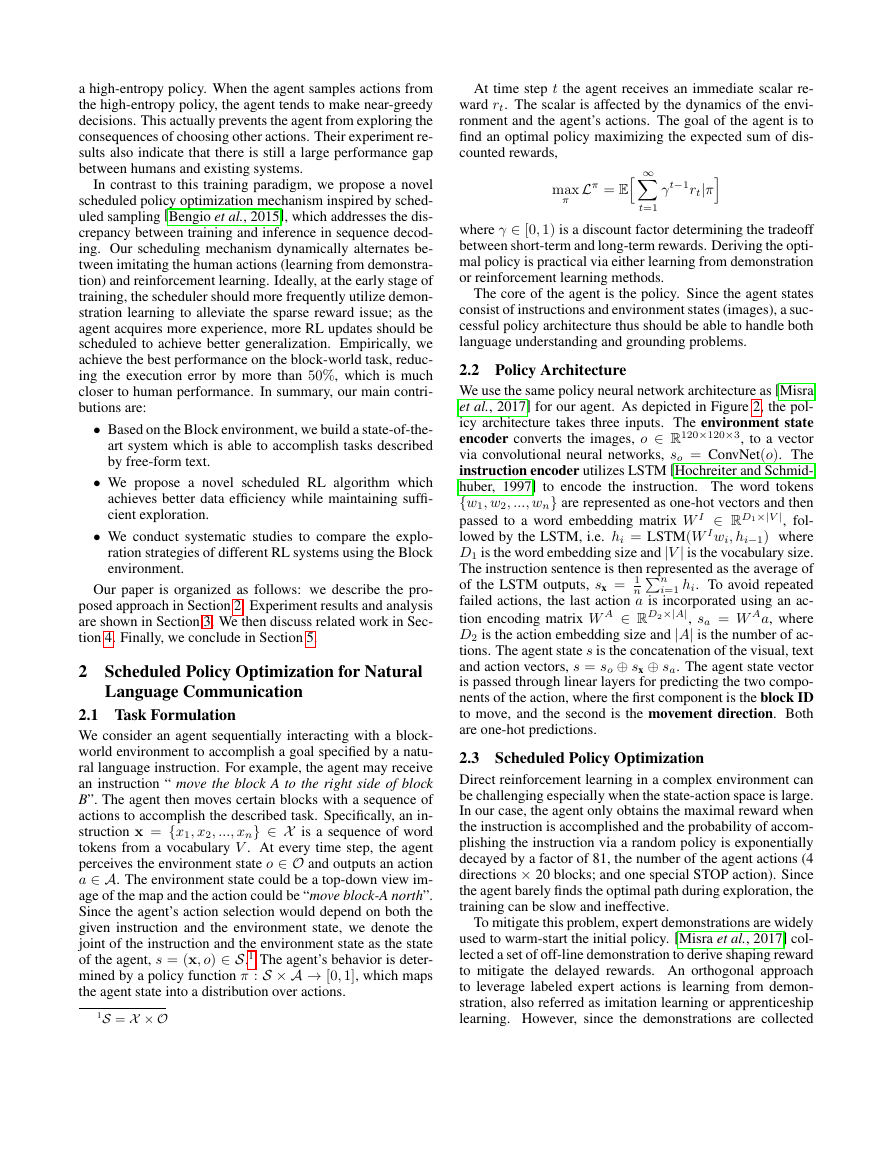
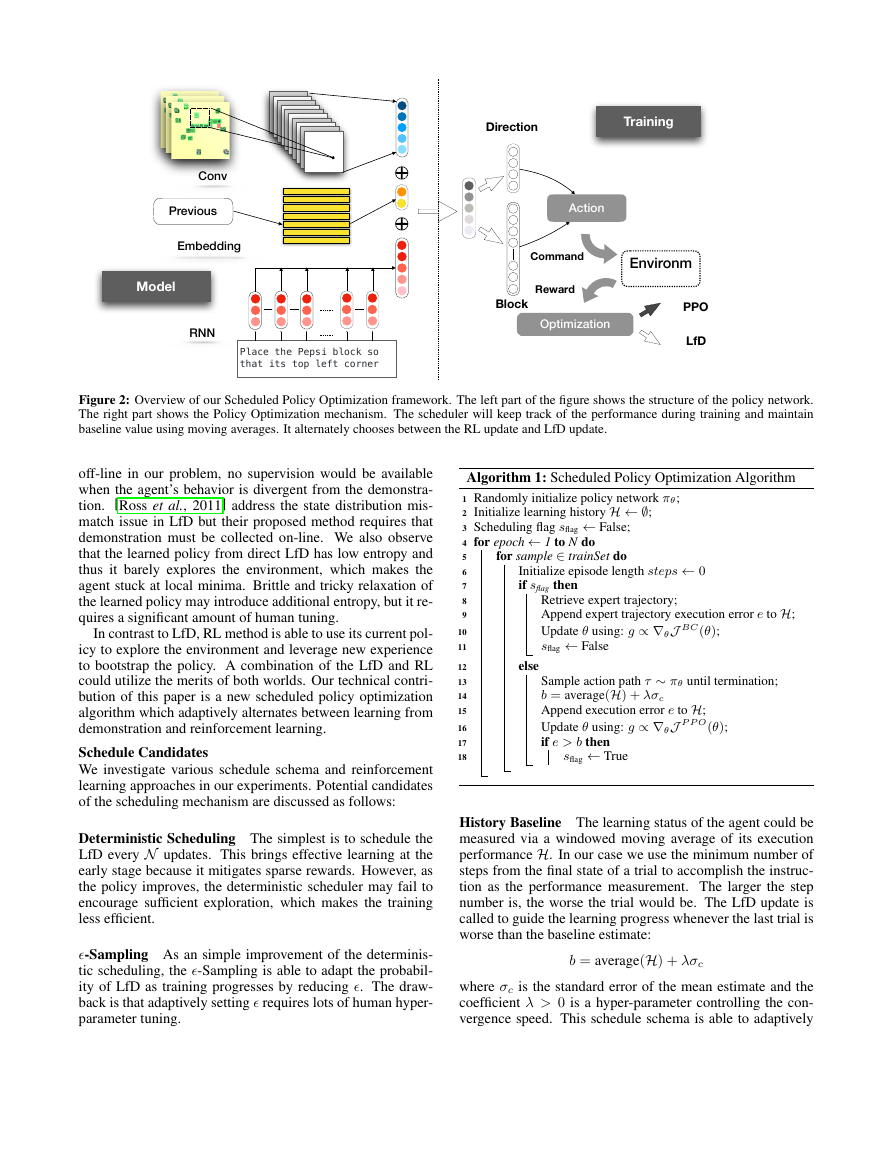
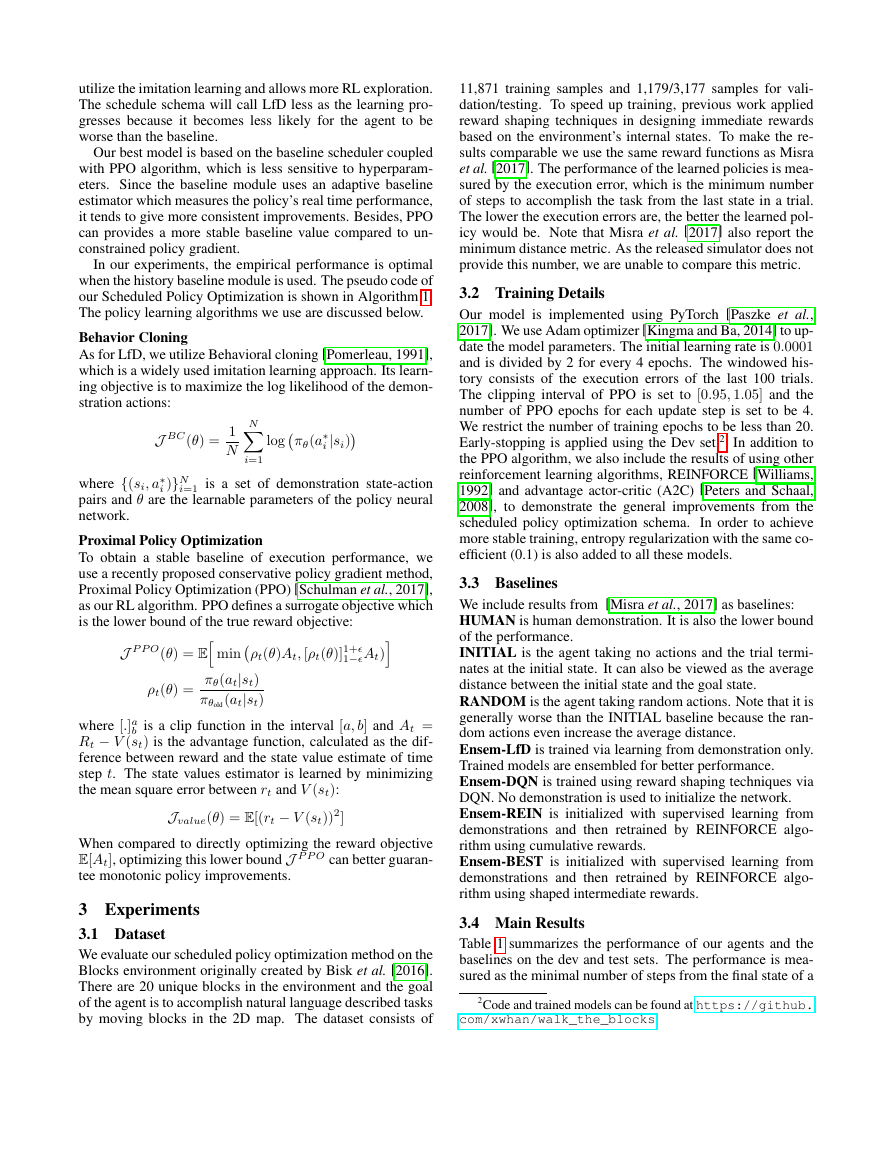
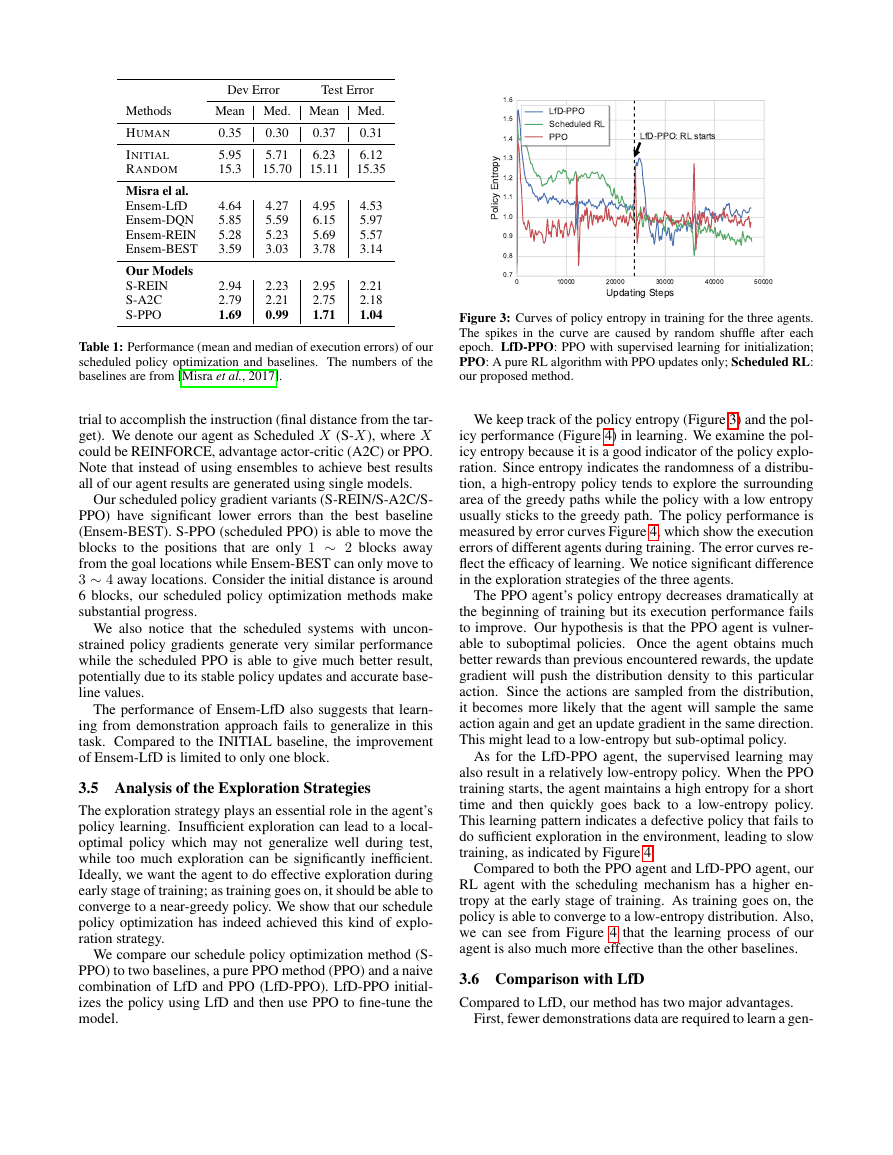
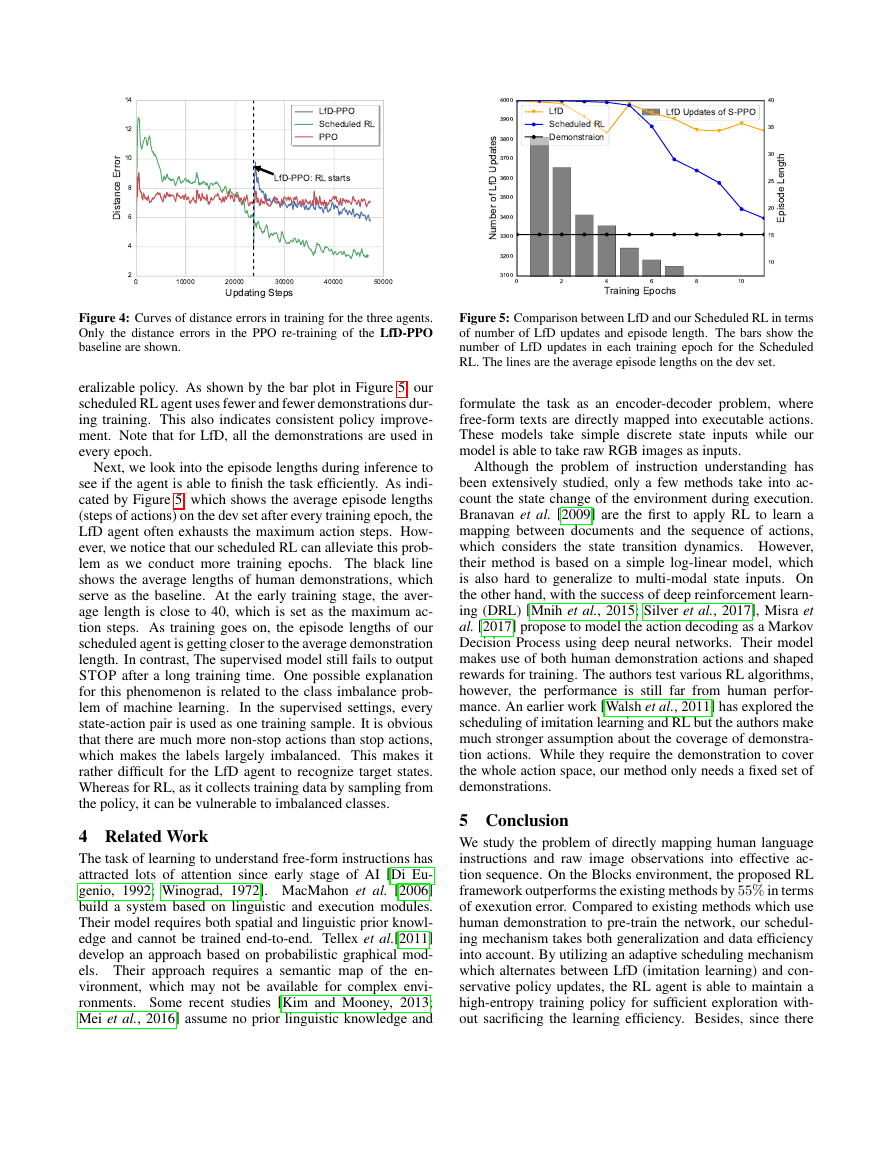
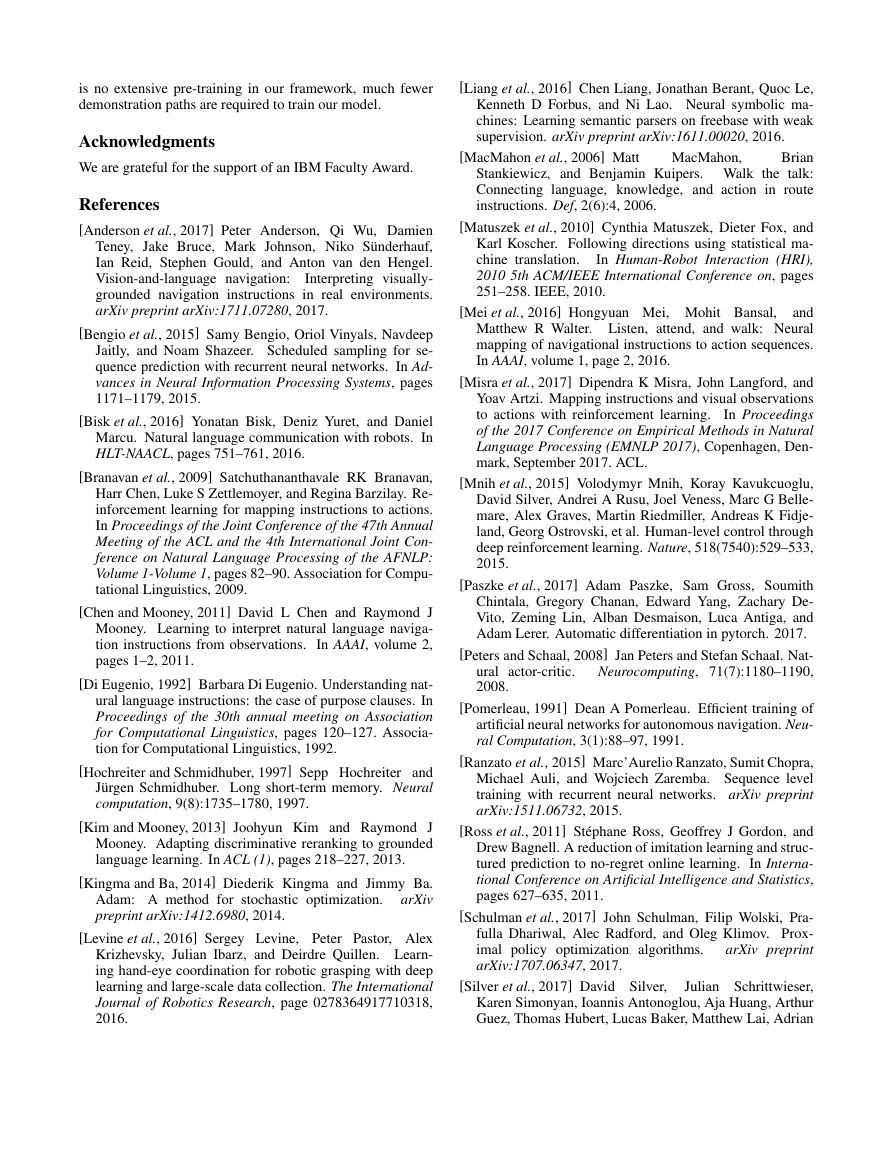
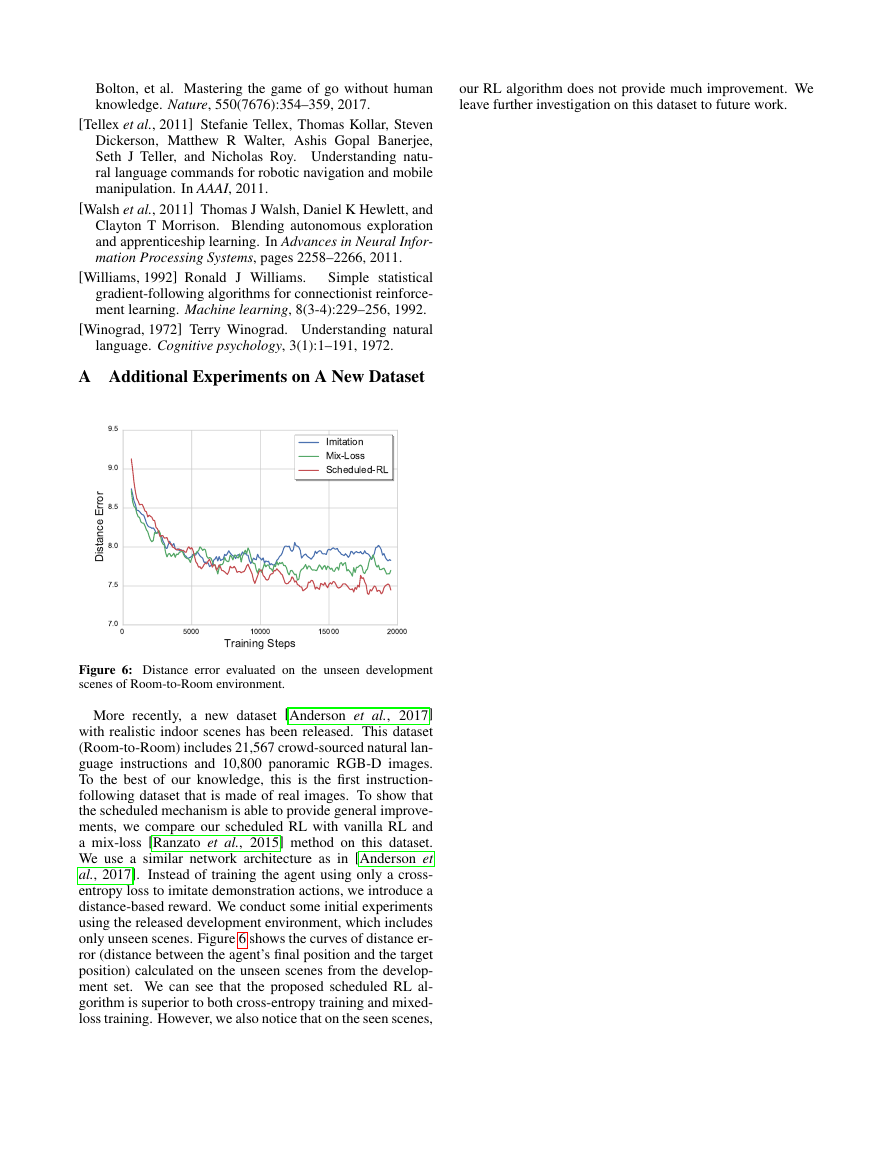








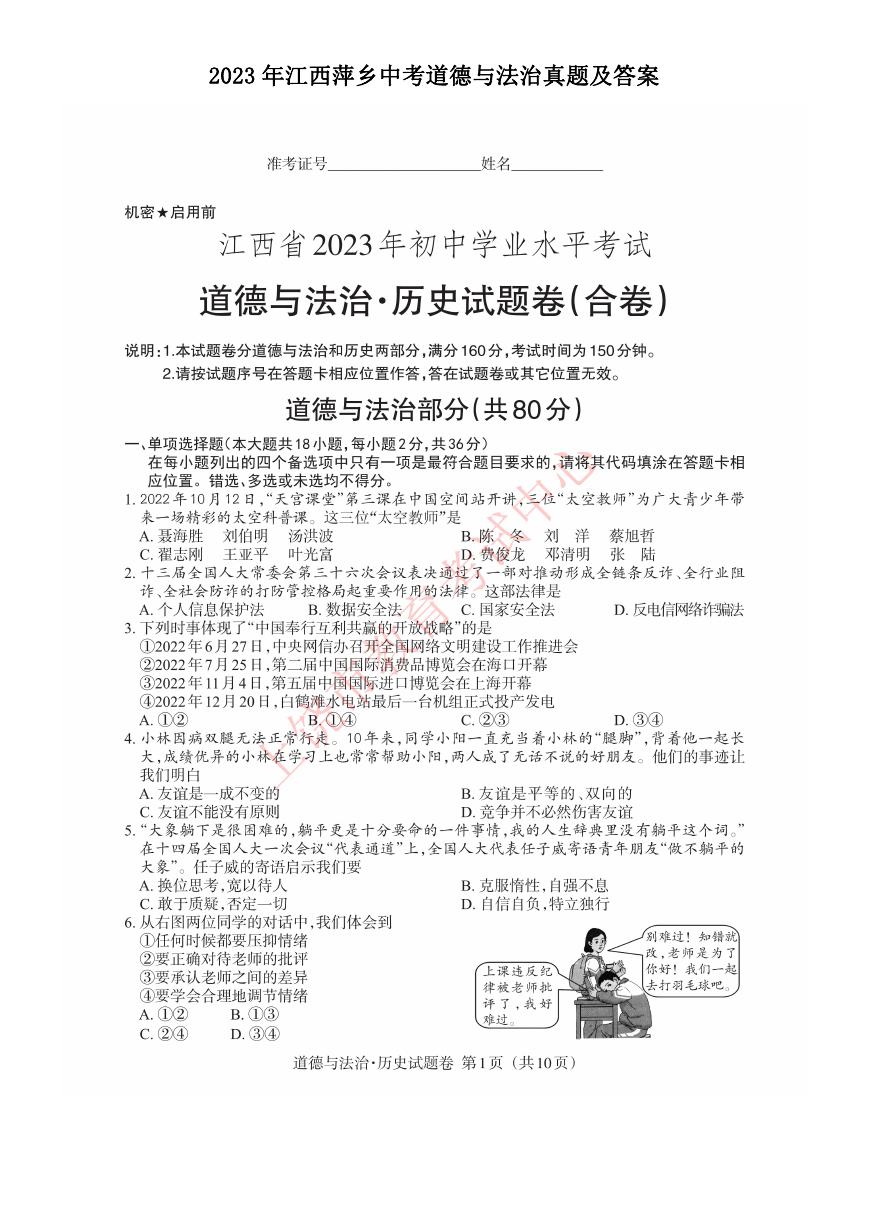 2023年江西萍乡中考道德与法治真题及答案.doc
2023年江西萍乡中考道德与法治真题及答案.doc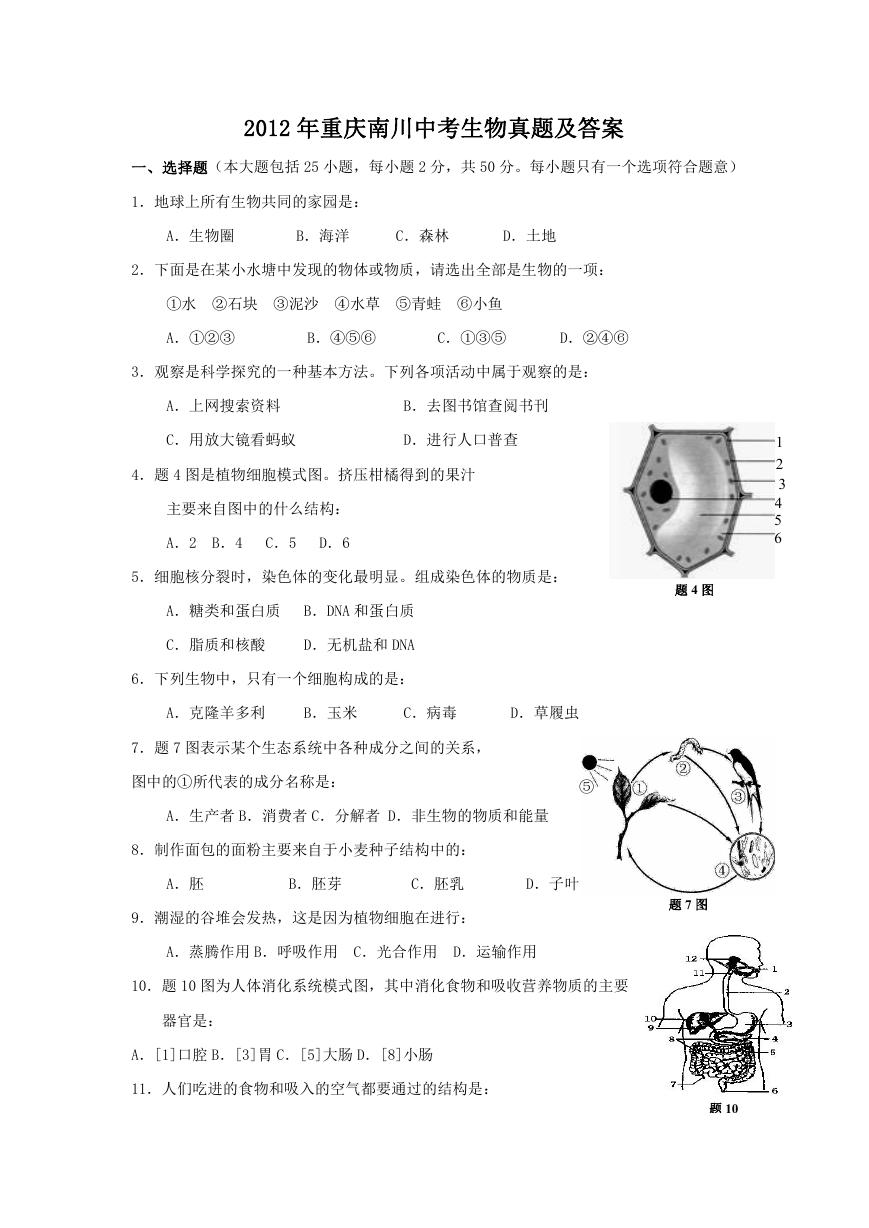 2012年重庆南川中考生物真题及答案.doc
2012年重庆南川中考生物真题及答案.doc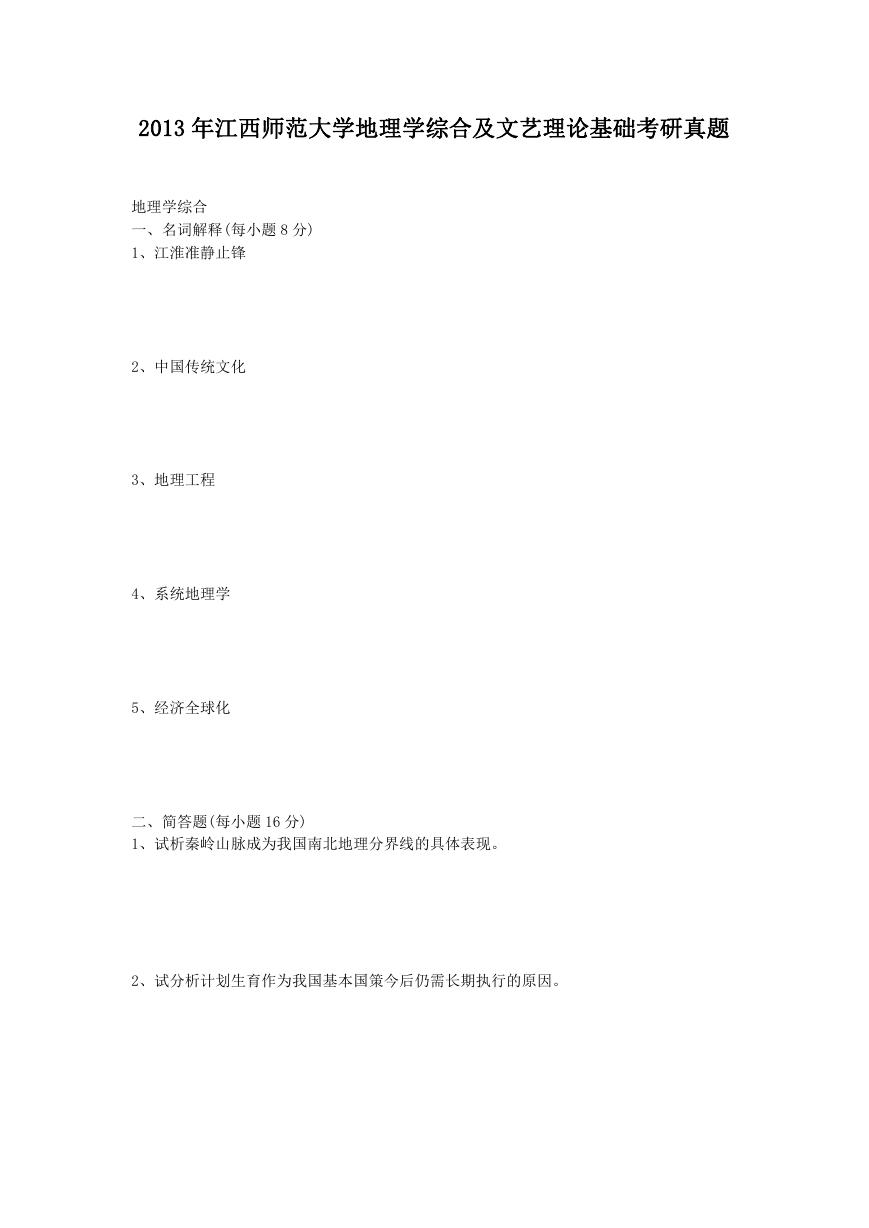 2013年江西师范大学地理学综合及文艺理论基础考研真题.doc
2013年江西师范大学地理学综合及文艺理论基础考研真题.doc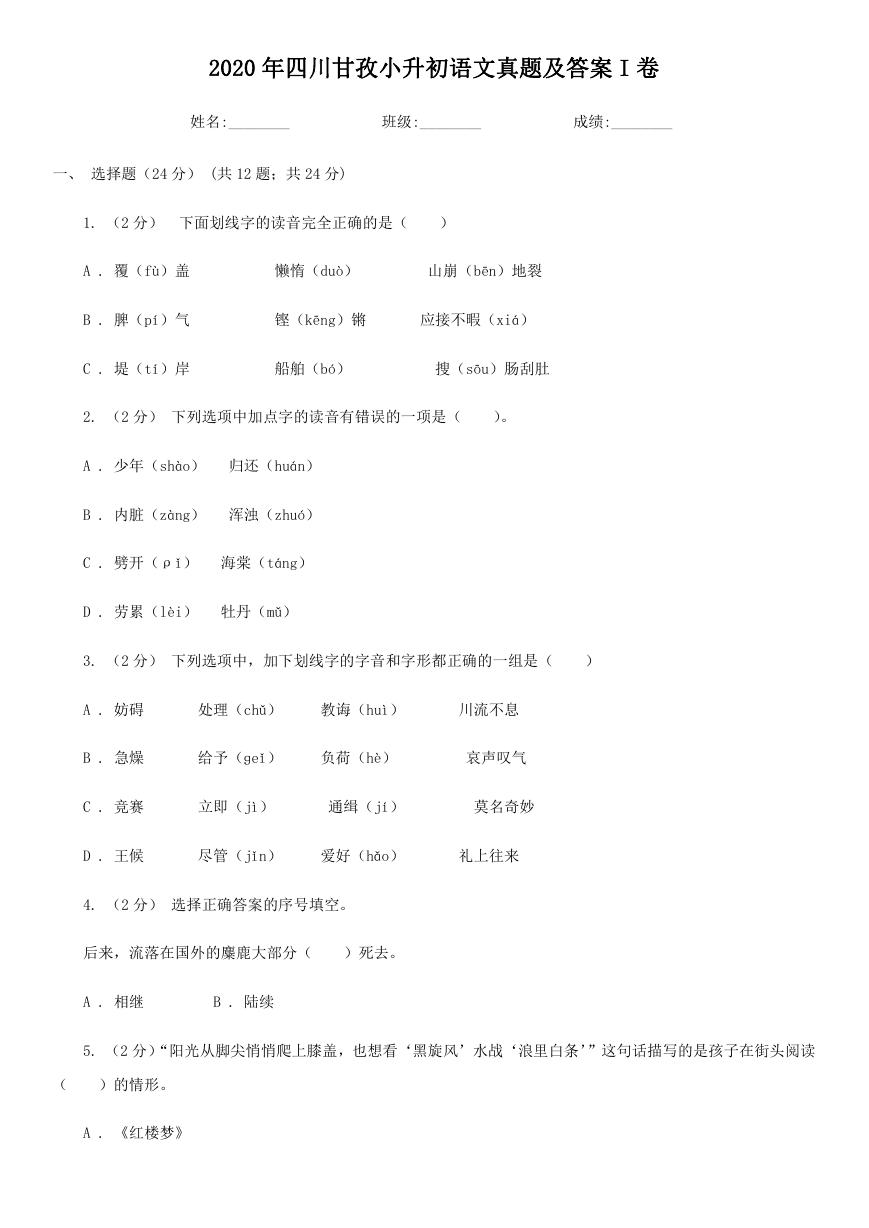 2020年四川甘孜小升初语文真题及答案I卷.doc
2020年四川甘孜小升初语文真题及答案I卷.doc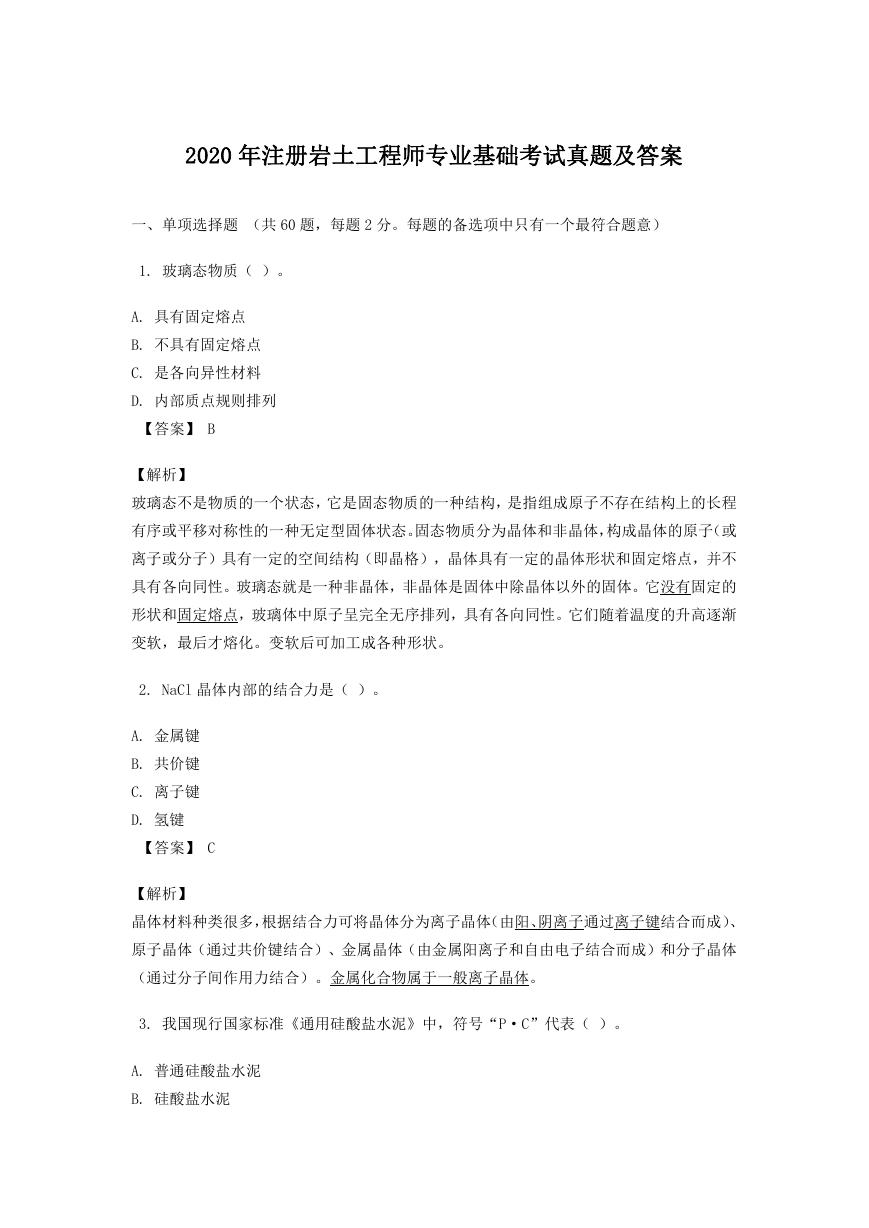 2020年注册岩土工程师专业基础考试真题及答案.doc
2020年注册岩土工程师专业基础考试真题及答案.doc 2023-2024学年福建省厦门市九年级上学期数学月考试题及答案.doc
2023-2024学年福建省厦门市九年级上学期数学月考试题及答案.doc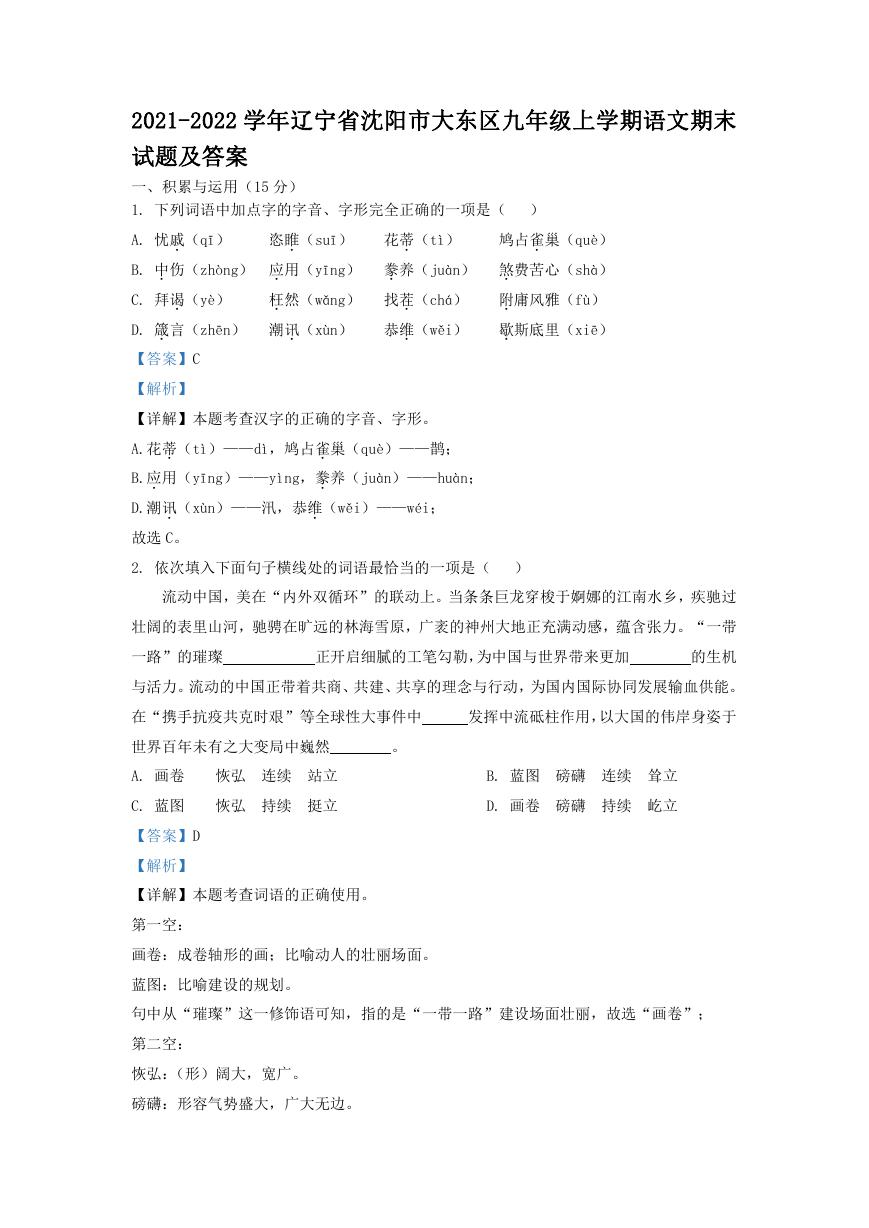 2021-2022学年辽宁省沈阳市大东区九年级上学期语文期末试题及答案.doc
2021-2022学年辽宁省沈阳市大东区九年级上学期语文期末试题及答案.doc 2022-2023学年北京东城区初三第一学期物理期末试卷及答案.doc
2022-2023学年北京东城区初三第一学期物理期末试卷及答案.doc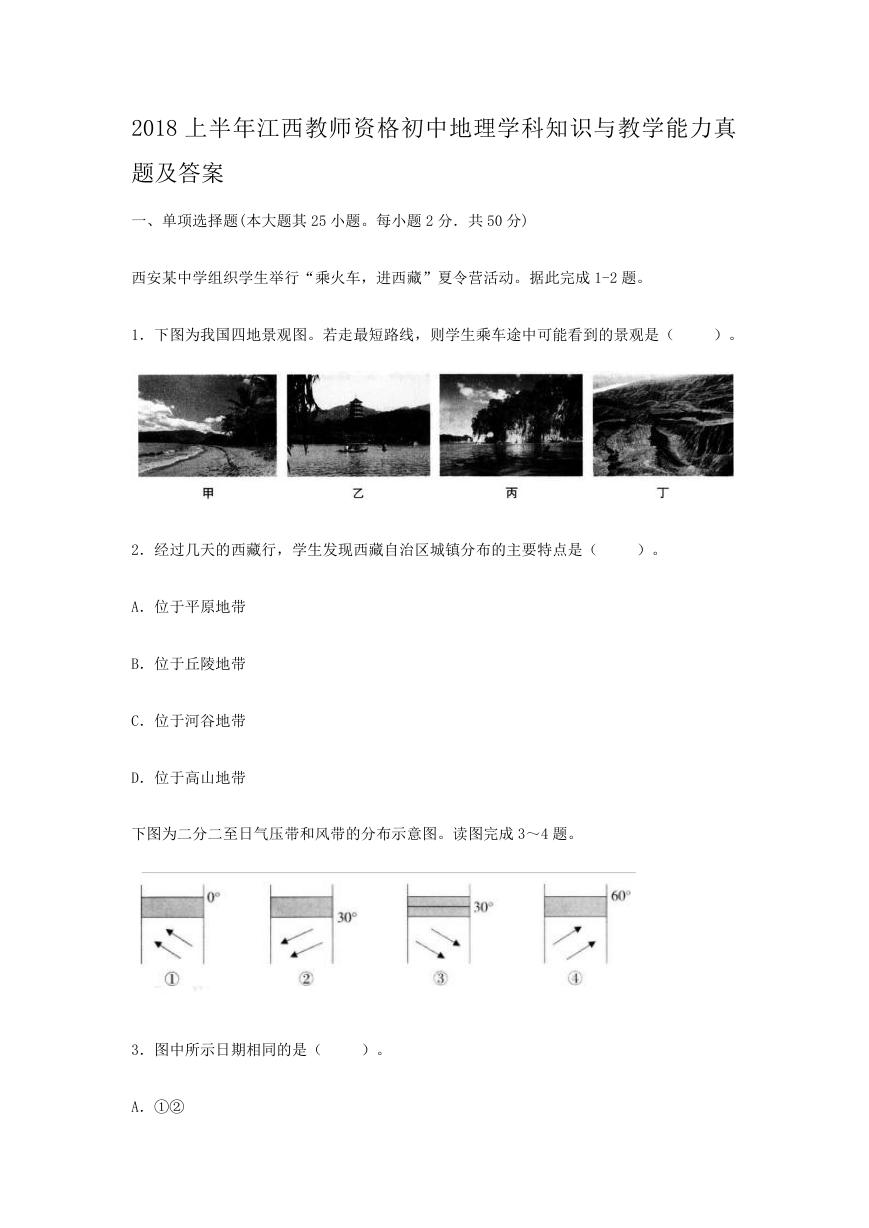 2018上半年江西教师资格初中地理学科知识与教学能力真题及答案.doc
2018上半年江西教师资格初中地理学科知识与教学能力真题及答案.doc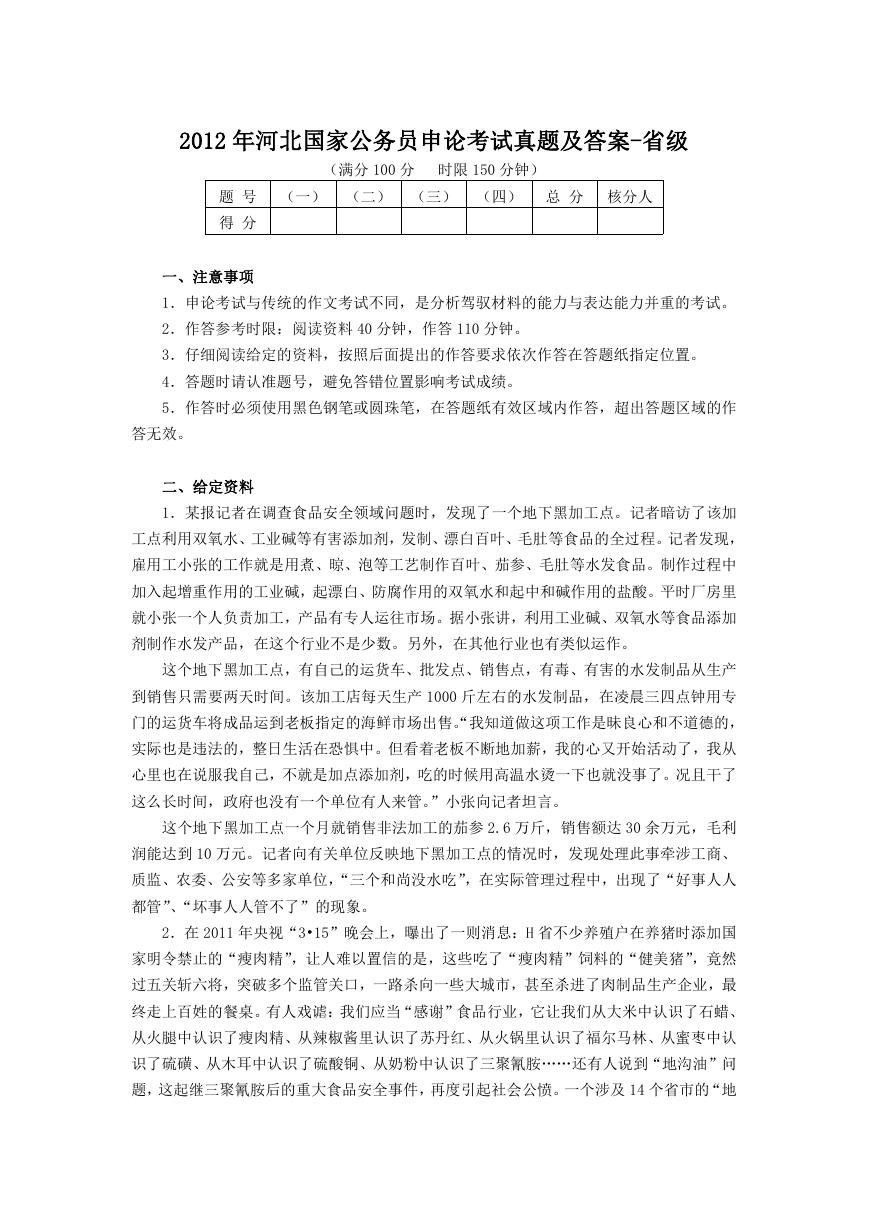 2012年河北国家公务员申论考试真题及答案-省级.doc
2012年河北国家公务员申论考试真题及答案-省级.doc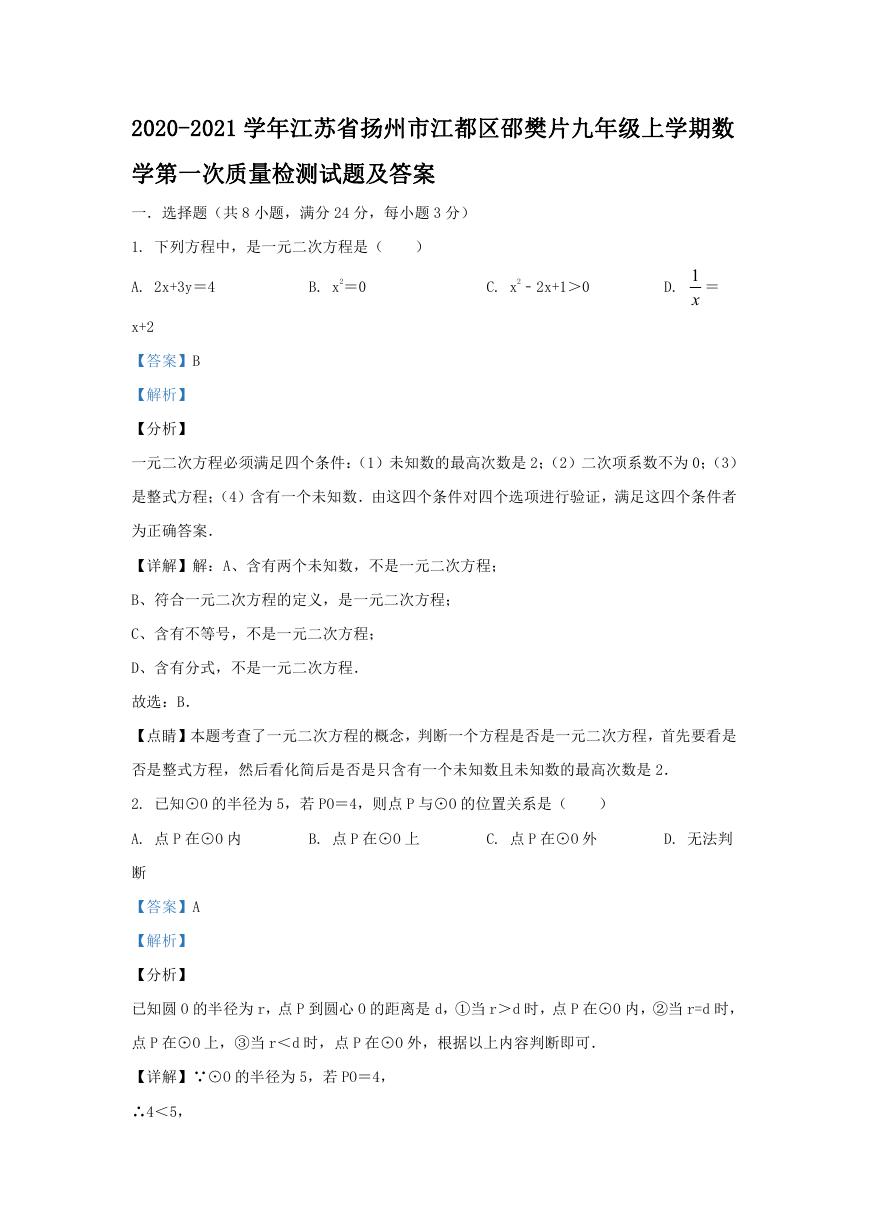 2020-2021学年江苏省扬州市江都区邵樊片九年级上学期数学第一次质量检测试题及答案.doc
2020-2021学年江苏省扬州市江都区邵樊片九年级上学期数学第一次质量检测试题及答案.doc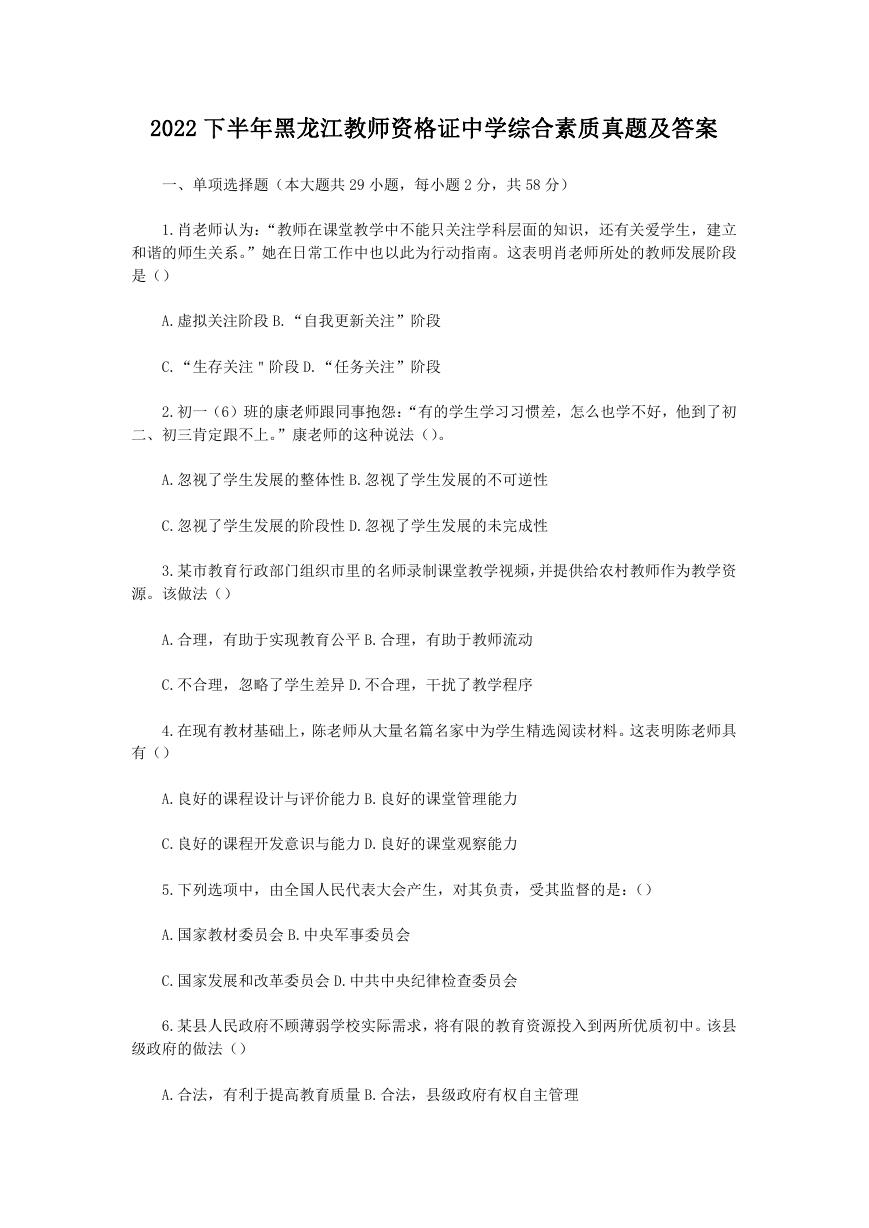 2022下半年黑龙江教师资格证中学综合素质真题及答案.doc
2022下半年黑龙江教师资格证中学综合素质真题及答案.doc